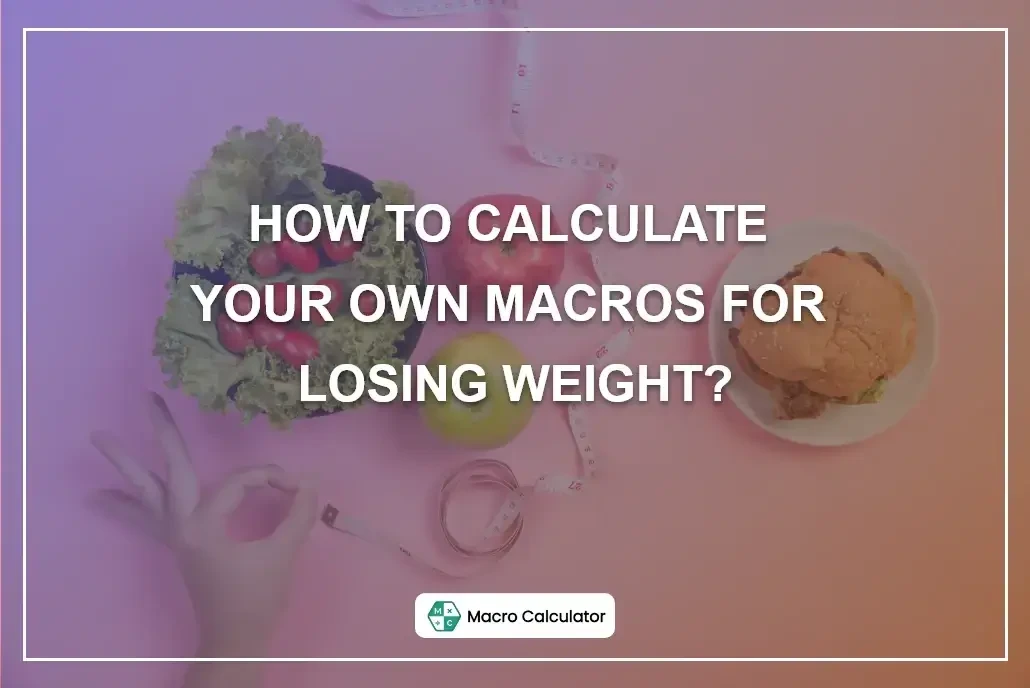 July 02, 2021
July 02, 2021
Counting macros is a better way of coming up with an effective diet plan for weight loss instead of just relying on the Calories calculation.
When you count calories, they don’t consider the nutrients that you need to reach your weight goals.
Counting macros is better in every way because it lets you know the number of macros that you need to consume on a daily basis for losing weight.
If you don’t know how macro calculation works and the weight loss benefits that you get because of it, then you are at the right place.
We are going to share with you all you need to know about Macros and how you can calculate them to lose weight.
Macros are essential nutrients that your body needs on a daily basis to survive and to grow. These include proteins, carbs, and fats.
By carefully managing your macros intake, you can your desired weight in a short amount of time.
For people who want to lose weight, they need to cut down on fat from their diet and get more proteins and moderate carbs instead.
Carbs contain about 4 calories per gram. Fats contain 9 calories per gram. Proteins also contain 4 calories per gram.
You can count the ratios for these macros as per your health goals to lose weight or even gain muscle if that is your goal.
If you want to lose weight and maintain it, you need to count your macros intake for that. It is the only way you can ensure that your weight stays as per your goals for the long run.

Diet is an essential part of our lives. So, if you can just manage that properly, you have no idea the kind of benefits that you can get from it. This is the primary idea behind macros calculation.
Macro Calculation offers you the freedom to occasionally indulge in foods that you just can’t give up. You still need to follow a controlled approach for that.
Macro calculation gives you the number of macros you need to take and as long as you reach the macros consumption goals, you can eat whatever you want to eat.
If you want to calculate your overall calorie requirements, you need to figure out your calories per day and multiply it by the activity factor.
Here is how you can do that
You need to figure out your calorie requirements per day. You can use the Mifflin-St. Jeor formula for calculating the calorie requirement.
Men: Calories/Day = 10 x Weight (kg) + 6.25 x Height (Cm) – 5 x age (y) + 5
Women: Calories/Day = 10 x Weight (kg) + 6.25 x Height (Cm) – 5 x age (y) - 161
Once you have calculated the calories/per day, you need to multiple it by the activity factor.
Here are the recommended values of activity factors that you can use
Sedentary – X.12 with Light Physical Activity
Light Activity – X1.375 with little exercise
Moderately Active – X1.55 with moderate exercise (most days of the week)
Very Active – X1.725 (Intense exercise)
Extra Active – X.19 (Extremely Intense Exercise Throughout the Week)
Multiplying the calorie per day with one of these values will give you the total number of calories you need to eat daily.
Now, you need to determine the ratios of macros that would work the best for you. Health specialists recommend following ratios for a healthy diet
Proteins: 10% to 35% of total calories intake
Fats: 20% to 35% of overall calories intake
Carbs: 45% to 65% of total calories intake
These ratios may vary from person to person. You need to figure out the ratios that work the best for you.
Your macros intake is highly influenced by your health goals and your dietary preferences. Still, you need a perfect blend of all the macros if you want to lose weight.
If your goal is to lose weight, you need to take fewer fats, more proteins, and moderate carbs. And if you want to gain weight, you need to take more fat, moderate carbs, and moderate proteins.
Different diets have a different number of calories for macros in them. If you prefer a diet that is high in carbs, you need to balance it with an additional diet that lets your body meet the need for the rest of the macros.
The Macro Calculator offers health enthusiasts a simple and easy way of calculating macros.
The calculator is designed to help people who don’t want to go through the hassle of manual calculation, calculate macros with ease.
The Macro Calculator asks you to input some basic information like your age, weight, height, and gender. Once you add all the required information, the tool calculates the macros intake for you.
This is what you need to enter in the Macro Calculator to calculate your macros for weight loss
Once you have selected all these different options, all you need to do is to click on the calculate button. This tool will give you a complete analysis of the total calories and the macros breakdown.
The macro calculation is a must for losing weight. Of course, things like intense workouts and certain medications also help. But a macro-based diet is the only way for you to lose weight without putting your body through unnecessary discomfort.
So, we highly recommend that you calculate the need for macros for your body. If you have any questions about Macro Calculation, feel free to reach out to us. We’d be happy to help you out!